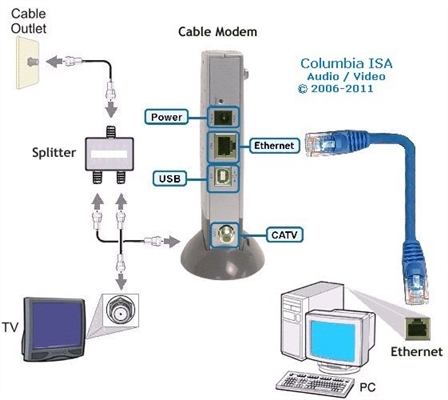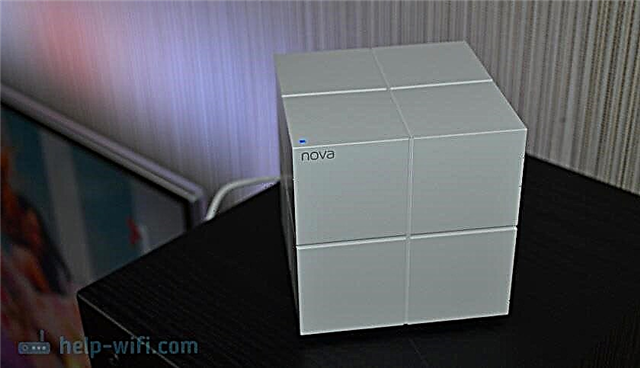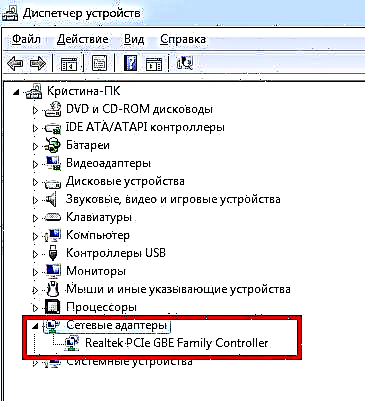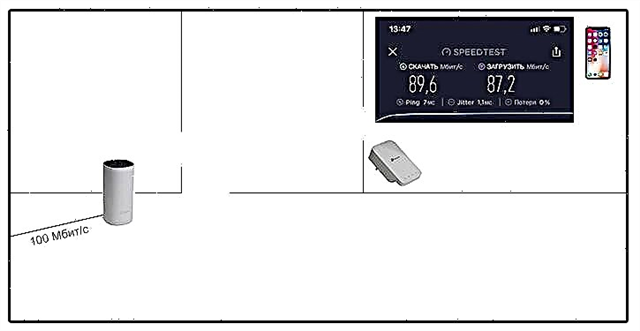In the comments to other articles, I have been repeatedly asked questions about the speed in a Wi-Fi network, which is built from a Mesh Wi-Fi system. Does the speed drop significantly between the Mesh modules of the system, what speed will be from the second or third module, will the speed be higher compared to a conventional router and Wi-Fi signal amplifier (repeater), etc. At the moment, all these questions are not very relevant since Mesh systems are not the most popular devices. The people still prefer conventional routers. And if the signal is weak, then they buy amplifiers. I did a little experiment that I want to share in this article.
If you are just thinking about buying a Mesh system, then I suggest you get to know these devices better in a separate article. You can also read my current article with recommendations for choosing a router or Mesh system.
How are the modules of the Wi-Fi Mesh system connected and what determines the speed?
A bit of information on how it all works and what affects the speed in Mesh networks. After connecting to the Internet and configuring one module, it starts distributing Wi-Fi. Like a normal router. Of course, the farther our device is from the module (access point) itself, the more different obstacles, interference, the lower the wireless connection speed. Well, in a certain place (room, yard) the signal is very bad, or not at all. If the connection is still on, the speed can be very slow. All this is due to a weak signal.
But we have a Mesh system. Therefore, we are installing another module (or maybe several), which will amplify the signal from the main module (to which the Internet is connected). All modules that are combined into one network create a seamless Wi-Fi network with fast roaming. As a rule, the modules are connected to each other via a Wi-Fi network. A service, hidden Wi-Fi network is created, through which data is transferred between the modules. Depending on the specific Mesh system, the connection can be via a dedicated Wi-Fi network (dedicated channel), via Ethernet (via cable), or even via Powerline (electrical wiring). A hybrid connection is used, such as Wi-Fi + Powerline.
Dedicated channel and Powerline can be found in the characteristics of expensive models. Well, I must say that there are not many Mesh systems with Powerline support. For example, TP-Link Deco P7.
And if all the modules of the Mesh system are connected via Wi-Fi, then there may be a drop in speed between them. And it is. It is very important to understand that this is basically a feature of Wi-Fi. When a signal is pulled out of a router or Mesh system, it immediately begins to lose its power. Due to the distance traveled, interference, obstacles, etc. And due to a drop in the signal, the speed and stability of the connection drops.
Therefore, it is quite logical that when the main model, for example, receives 100 Mbit / s over the cable and transmits it to another module, which is installed in another room, then the second module receives, say, 80 Mbit / s. Here the question is already how much the speed will drop and on what it depends:
- First of all, it depends on the signal strength of the Wi-Fi network in the place where the other module is installed. And this, as we have already found out, is affected by distance, obstacles, interference from other devices and Wi-Fi networks. Therefore, you don't need to place modules too far apart. Many models have indicators that indicate the signal level between the modules. This information can also be displayed in the application.
- From the performance of the Mesh system. The more productive the processor, wireless modules, the higher the speed will be even under load (when many devices are connected). Here everything is usually simple: the more expensive the system, the higher its performance.
- Beamforming, MU-MIMO and other functions (their presence / absence) can also affect the speed.
If there is a possibility (a cable is laid) and your system supports Ethernet connection between modules (I think this function is available on all systems), then it is better, of course, to connect the modules via cable. Then the speed loss will be minimal. Also, if you are doing repairs and planning to install a Mesh system, then it is better to immediately lay the cable. Just in case. This method has one drawback - minus 1 LAN port on the module. And there are not many of them, usually two.
Real speed in Mesh Wi-Fi network
What we have: TP-Link Deco E3 Mesh Wi-Fi system. It consists of one (main unit) Deco E4R and a Deco M3W Mesh amplifier. This is one of the most affordable systems. It is not quite standard, as it consists of one module and an amplifier. Usually these systems have 2-3 full (identical) modules.

The Internet is connected to it from the optical terminal. In the settings of the system itself, the Internet connection type "Dynamic IP (DHCP)" is selected. Setting up a PPPoE, L2TP, PPTP connection most likely can also affect the speed for the worse. I have a speed of up to 100 Mbps at the provider's rate.
Fast Roaming is enabled in the Mesh settings of the system (but I'm not sure if it somehow affects the speed). I wrote more about this function here. I recommend everyone to turn it on.
I made speed measurements on iPhone X. Through the Speedtest application. Here are the instructions: how to check the internet speed on a computer, smartphone, tablet. iPhone connects in the 5 GHz band.
The walls in the house are made of bricks and plasterboard. There are no neighboring Wi-Fi networks (due to interference from them, the speed may also drop).
- Internet connection speed measurements near the main module (Deco E4R). The second module is disabled.
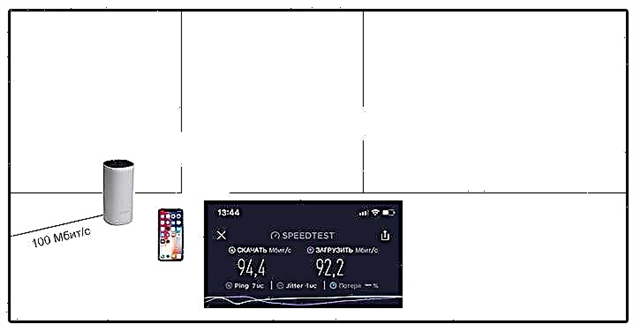 The result is almost the maximum speed that the ISP promises for my tariff.
The result is almost the maximum speed that the ISP promises for my tariff. - Then I measured the speed in the corner of the back room. The second Mesh module of the system (amplifier) is still disabled.
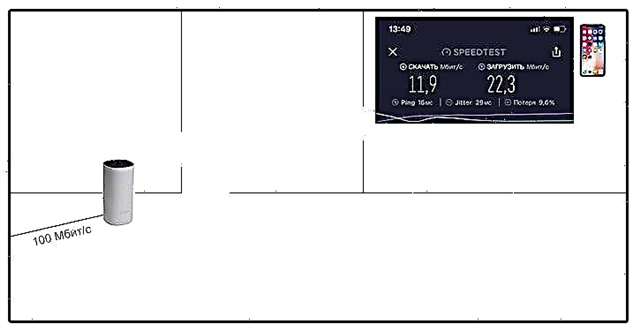 As you can see, only 11 Mbps out of 100 Mbps. Not really. And on a laptop in this place, the network is generally unstable. Frequent dropouts due to poor signal. The ping also doubled.
As you can see, only 11 Mbps out of 100 Mbps. Not really. And on a laptop in this place, the network is generally unstable. Frequent dropouts due to poor signal. The ping also doubled. - We plug in the second module, wait for it to load and take measurements again.
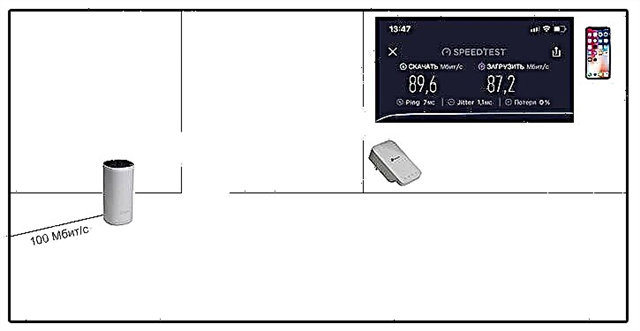 The speed is almost the same as near the main module. Almost 90 Mbps download. And the ping recovered. Excellent!
The speed is almost the same as near the main module. Almost 90 Mbps download. And the ping recovered. Excellent! - For the sake of interest, I also checked the speed in the place where the second module (amplifier) is installed. Turned it off.
 The speed drops by half compared to measurements near the main unit and with the second mesh unit on the system. It turns out that if the second module gives 90 Mbit / s, then it also receives these 90 Mbit / s from the first module. And the phone in the same place shows only 45 Mbps.
The speed drops by half compared to measurements near the main unit and with the second mesh unit on the system. It turns out that if the second module gives 90 Mbit / s, then it also receives these 90 Mbit / s from the first module. And the phone in the same place shows only 45 Mbps.
Conclusions
Even an inexpensive Mesh system shows excellent results. I am sure that with a regular router and Wi-Fi signal booster, the results would be much worse. Even with a good position, the repeater usually cuts the speed in half. And the second Mesh module of the system amplifies the signal (and, accordingly, the speed) with practically no loss. When the second module is turned on, then Wi-Fi catches in the yard, and even in another room. True, the signal there is weak and the speed, of course, is not the same as in the house. But this can also be fixed by installing another module.
It is important to understand that exactly the same equipment as mine, with the same location in another house, can show completely different results. Signal and speed are influenced by many external factors. Also, on different devices (Wi-Fi clients), the speed may differ significantly.
If you have a similar experience, you took speed measurements on your seamless Wi-Fi network, or compared a Mesh Wi-Fi system with a router (in terms of coverage and speed) - share the results in the comments. This information will be of interest to me and the visitors of our site.

 The result is almost the maximum speed that the ISP promises for my tariff.
The result is almost the maximum speed that the ISP promises for my tariff. As you can see, only 11 Mbps out of 100 Mbps. Not really. And on a laptop in this place, the network is generally unstable. Frequent dropouts due to poor signal. The ping also doubled.
As you can see, only 11 Mbps out of 100 Mbps. Not really. And on a laptop in this place, the network is generally unstable. Frequent dropouts due to poor signal. The ping also doubled. The speed is almost the same as near the main module. Almost 90 Mbps download. And the ping recovered. Excellent!
The speed is almost the same as near the main module. Almost 90 Mbps download. And the ping recovered. Excellent! The speed drops by half compared to measurements near the main unit and with the second mesh unit on the system. It turns out that if the second module gives 90 Mbit / s, then it also receives these 90 Mbit / s from the first module. And the phone in the same place shows only 45 Mbps.
The speed drops by half compared to measurements near the main unit and with the second mesh unit on the system. It turns out that if the second module gives 90 Mbit / s, then it also receives these 90 Mbit / s from the first module. And the phone in the same place shows only 45 Mbps.
